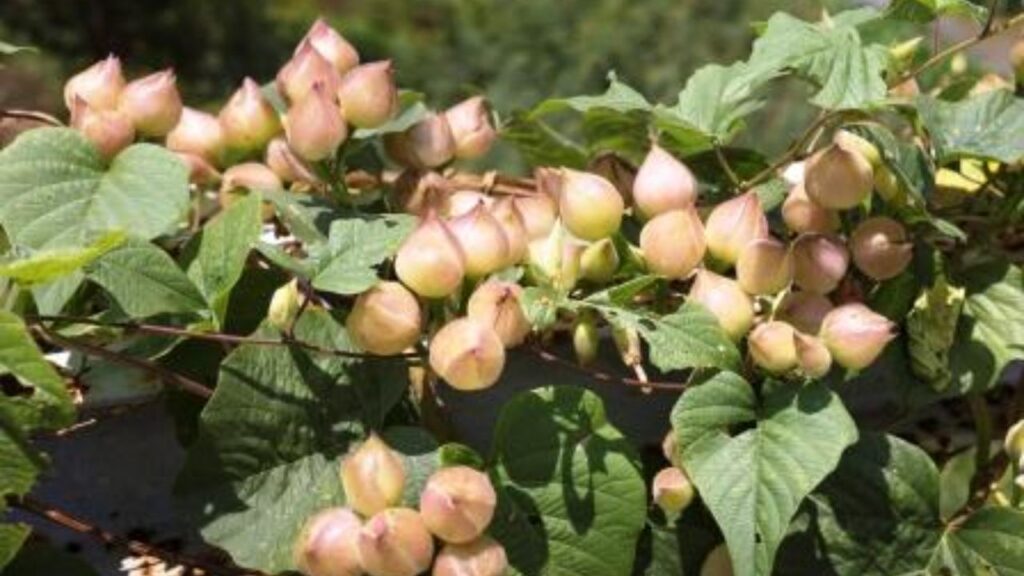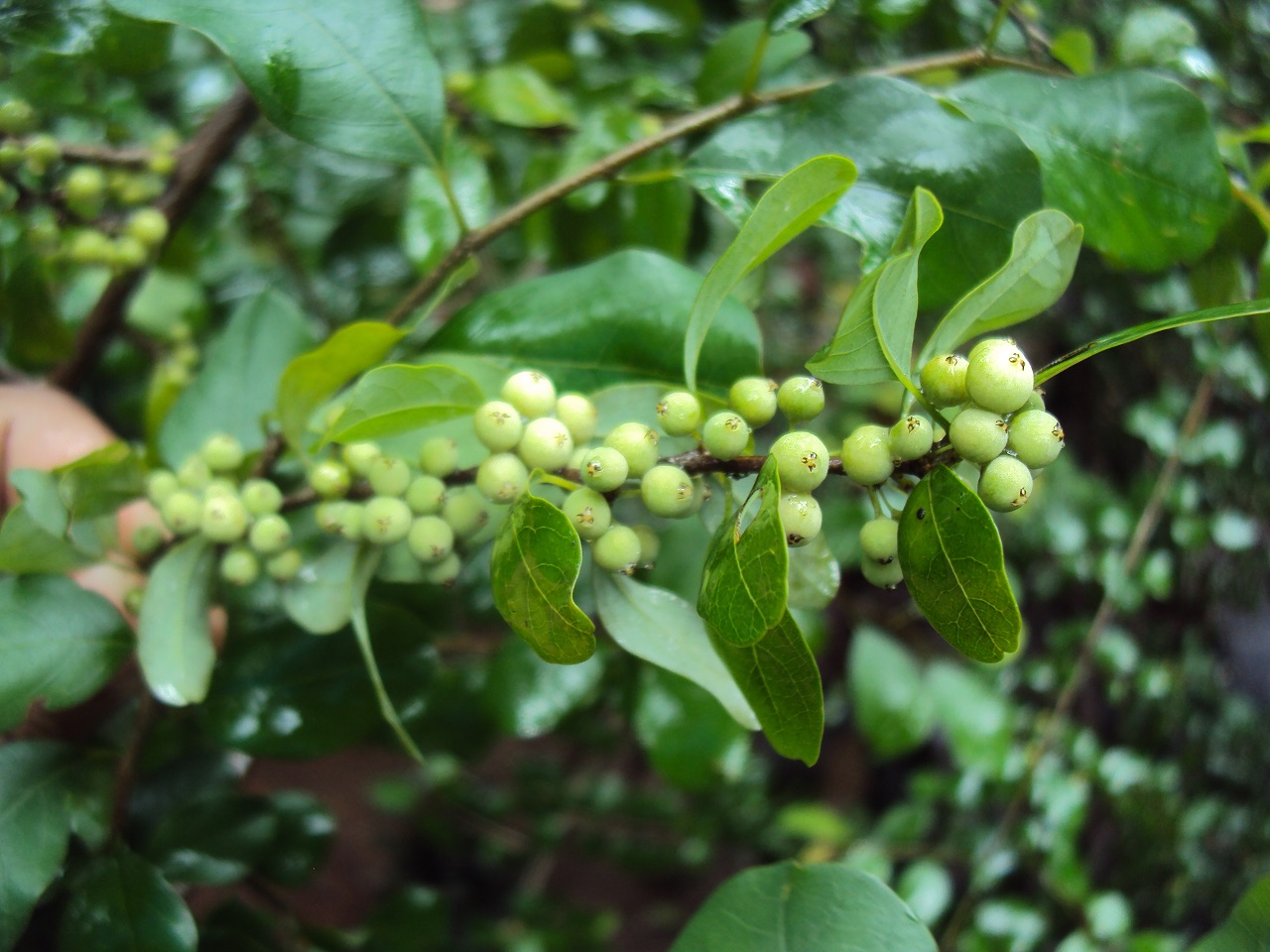
Family : Convolvulaceae
Biological classification
- Kingdom: Plantae
- Subkingdom: Tracheobionta
- Superdivision: Spermatophyta
- Division: Angiosperma
- Class: Dicotyledons
- Order: Solanales
- Family: Convolvulaceae
- Genus: Operculina
- Species: Operculina turpethum (L.)
Introduction To Trivrit
Ayurvedic system, It has been incorporated as in the group of “ten purgative herbs,” supportive for a therapeutic enema, ten antidote herbs in the group of herbs eliminating the toxins, and in the group of colon cleanser, anticancer, and antidote herbs. Young leaves and stem of the plant are employed as a vegetable. The antimicrobial activity of the stem was also studied.

Habitat / place of origin
It is a native herb and scattered in Australia; Africa; Pacific; Asia-Tropical (India, Nepal, Pakistan, Sri Lanka, Indochina, Myanmar, Thailand, Indonesia, Malaysia, Papua New Guinea, Philippines); and Asia-Temperate.
Synonyms of Trivrit
Sanskrit: Trivrutha, Triputa, Nishitra, Tribhandi, Suvaha, Sarala, Recani
Assamese: Doodh Kulmi, Pithori, Naakapathra, Peethohari.
Bengali: Tevdi, Tendi, Dudh, Kalani
English: White Day Glory, India Jalap, Saint Thomas Lidpod, Transparent Woos Rose, Turpeth Root
Gujarati: Nasttara
Hindi: Nisoth, Pitphari
Kannada: Bilitigade, Tigade Beru
Malyalam: Thrikoolpakkonna
Marathi: Nisottar
Oriya: Dudholomi
Punjabi: Nishot
Tamil : Civatai, Paganrai, Caralam, Kumpncan
Telugu: Trivrut Tellatega, Tegada, Doodh-Kulmee, Tegarh
Unani: Turbood
Morphology of Trivrit
- Stem: Prostrate or scrambling vine ,tough, Simple, triangular or rectangular with hairy stem. Moderate Sized , Green, and though brown when old and 10 To 20 Feet heigh
- Leaves : Alternate and Simple , 5-10 cm by 1.3-7 cm, 6-7 Pairs, Variable heart shape, Reticulate veined , hairy
- Flower: One, or few in Cymes; axillary clusters of 1-3 on stalk to 10cm, White, with a tinge of cream colour
- Peduncles: Axillary, 1-4 flowered,10cm long, Stout
- Bracts: 2, Large, lanceolate, conspicuous, orbicular to oval, membranous, concave, pubescent, somewhat persistent, 2.5-4 cm long, often pinkish, soon shed
- Flower Characteristics: Funnel shaped; Very Showy
- Sepals: 5, glossy, tinged pink, to 3cm long orbicular, obtuse, mucronulata, accrescent, outer sepals the largest, pubescent, ovate-roundish, but in fruits it becomes much enlarged
- Corolla: white, campanulate or broadly funnel-form, spreading to about 5cm; and .5 cm long
- Stamens: strongly included,
- Anthers: anthers tightly coiled, pollen not spinulose
- Capsule: globose, dull black 4-sided, 4-celled, 13.8mm diam, enclosed in the enlarged brittle, very imbricate sepals, glabrous or faintly pubescent.
- Fruit Type: Glabrous, Indehiscent
- Fruit: translucent capsule with 2-4 cells
- Fruit epicarp: Circumscissile
- Round and 4cm long
- Fruit (Unripe) Color: Pink
- Fruit (Ripened) Color: Dull Black
- Seed: 4, glabrous, round, 1 in each cell
- Seeds length: 6 mm
- Black coloured with Smooth surface
- Fruit Covering: Bracketed by papery sepals
- Flowering time: March- December (June)
- Fruiting time: March- December (November)
Medicinal Parts
Root Bark
Plant variety of Trivrit
According to charka it has two varieties :-
- Arun
- Shyama: It is used for teevr Virachan.
Now a days only two varieties are used
- White nishoth :
-
-
- Botanical name : Marsdenia tenacissima
- It has no bark on their stem and root.
- It is not used for virschan purpose.
-
- Black nishotha : It is the original trivrit.
Chemical Composition of Trivrit
- Resin
- A fatty substance
- Volatile oil
- Albumen
- Starch
- A yellow coloring matter
- Lignin
- Salts
- Ferric oxide
The resin is brownish, yellow and odourless with a bitter pungent taste which is soluble in alcohol and particularly soluble in ether (Diethyl ether CH3-CH2-O-CH2-CH3).
- Glucose, rhamnose, Scopoletin fructose obtained by acid and alkaline hydrolysis of resin.
- Trivrit contains sixteen amino acids both in hydrolysate and free forms and also gamma linolenic acid.
Ayurvedic Properties of Trivrit
Rasa (Taste) : Tikta , Ruksha
Guna (Quality) : Ruksha, Laghu , , Tikshan
Virya (Potency) : Ushna
Vipak (Post Digestive Effect): Katu
Karma (Pharmacological Actions)
Dosha Karma : Kapha-Pitta Sanshodhan
Pachan Sansthan (Digestive System ): Bhedan , Rechan , Sukhvirachan ,
Raktvahsansthan (Cvs): Shothhar
Tapkarma (Thermoregulations): Jawarghan
Lekhan
Qualities/Effects on Tridosha of Trivrit
Due to katu guna it works on kapha and pitta.
Formulations of Trivrit
- Trivritaadi churna
- Trivritaadi gutika
- Trivritaadi kawath
- Trivritaadi gherit
Therapeutic Uses of Trivrit
- It is indicated kapha -pittaj diseases
- It is indicated in digestive disorders , bloating gas , abdominal distention
- It is indicated in jaundice
- It is indicated in hemorrhoid treatment
- It is indicated in swelling and pain
- It is indicated in blood disorders
- It is indicated in fever
- Also indicated in obesity
- Splenomegaly and liver disorders
- Indicated in ascites , anemia
- Indicated in worm infestations
Dosage
Churna =1-3gm
How can you consume Trivrit?
- It is used as power and kwath form.
- It is used as an active ingredient in different formulations for different diseases.
Anupana:-
- it is used with warm water or lukewarm water.
- Or with cow milk.
Benefits of Trivrit
- In Fever caused by pitta and kapha trivita is used with sugar
- Intrinsic hemorrhage.
- It used to provide relief from constipation and the disorders caused thereby.
- It acts as good purgative.
- It relieves pain in udara caused by Vata.
- Anemia and Jaundice.
- Alleviates erysipelas.
- Abscess.
- Eye disease.
- For purification of breast milk.
- Resolve problem of hemorrhoids.
- Treatment of edema.
- Supports good health of liver.
- Maintain healthy cholesterol level.
- Treatment of respiratory complications like, tuberculosis, bronchitis, etc.
- Used for dressing the infected, foul wounds.
- Used in diseases like flatulence, jaundice, ascites, gout, rheumatic fever, asthma.
- Good remedy against worms.
- It used externally applied over hemorrhoids, ulcerations and chancres.
- Delirium associated with restlessness, loquacity. Tendency to escape from bed; ravings, pains cause fainting.
- Watery diarrhoea, profuse with sinking sensation, Cholera morbus.
- It removes the phlegm, swellings of the limbs, and it is used in various diseases of the stomach. It also heals ulcers, and is useful in diseases of the skin.
- Nisoth gives relief from piles and its symptoms like itching, burning and swelling in anus .
- Nisoth shows good results in lowering excess fat and swelling in the body by expelling out extra water and toxin from the body.
- Trivita provide relief from some respiratory problems like cough, asthma , bronchitis, and breathlessness caused due to excess mucus.
- This herb is often used in arthritis to reduce the inflammation and swelling in joints.
- It helps to reduce the risk of bacterial infection caused by Shigella dysenteriae and Escherichia coli.
- Helps in protecting the liver from chemical induced damage.
- Reduce the blood sugar level.
- Beneficial in managing pneumonia.
- It is useful in ascites.
Side Effects of Trivrit
If used on excessive use it can cause inflammation , vertigo , dizziness twitching pain of abdomen , severe diarrhea.
Safety Precautions
- Not safe for use during pregnancy.
- Children below 12 years of age.
- In elderly.
- In physically or mentally weaker persons,
- In persons suffering from diarrhea,
- Bleeding per rectum,
- Rectal prolapse,
- Fecal incontinence.
References & Further Reading
- Dravyaguna vigyan =pv sharma .
- https://ayushvedah.com/druginfo.php?drugid=685&info=precautions
- https://www.1mg.com/ayurveda/nisoth-60
- https://indiabiodiversity.org/species/show/265807
- Ayurvedic pharmacopeia of India part 1 , volume III




